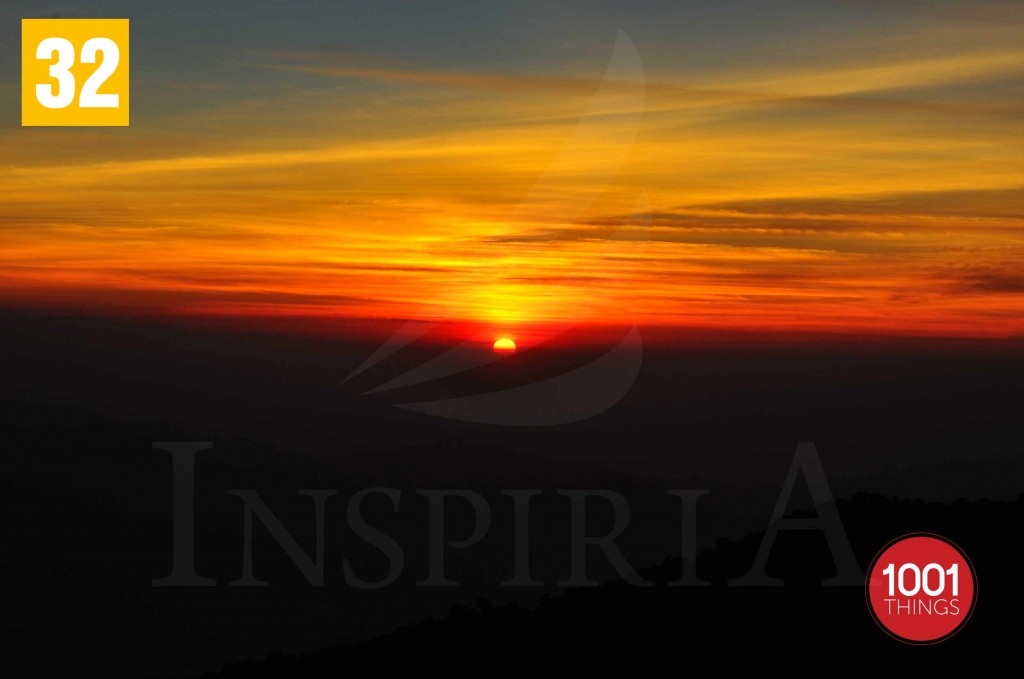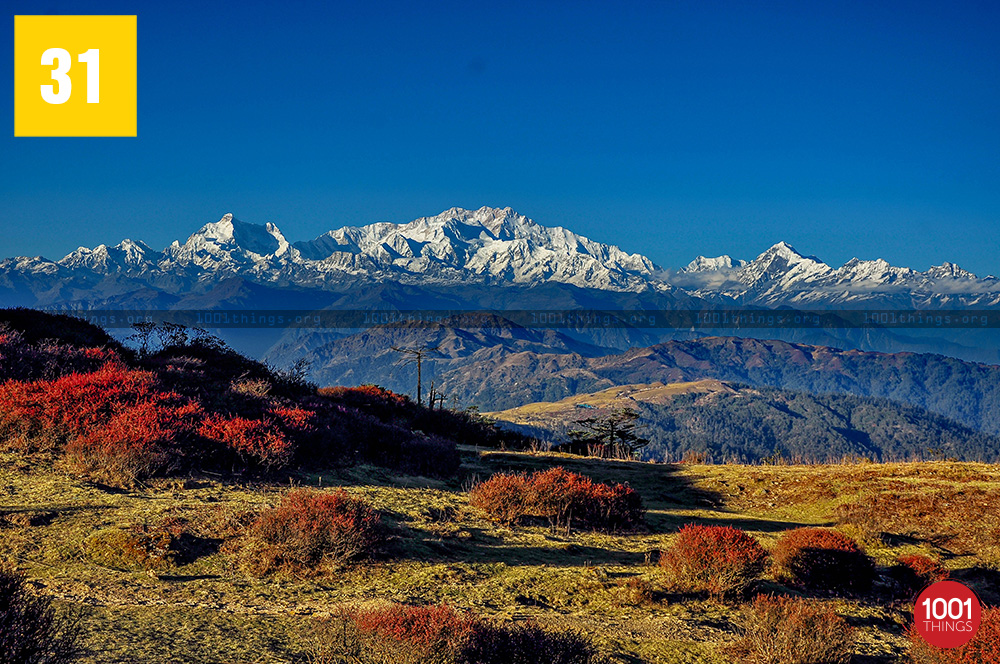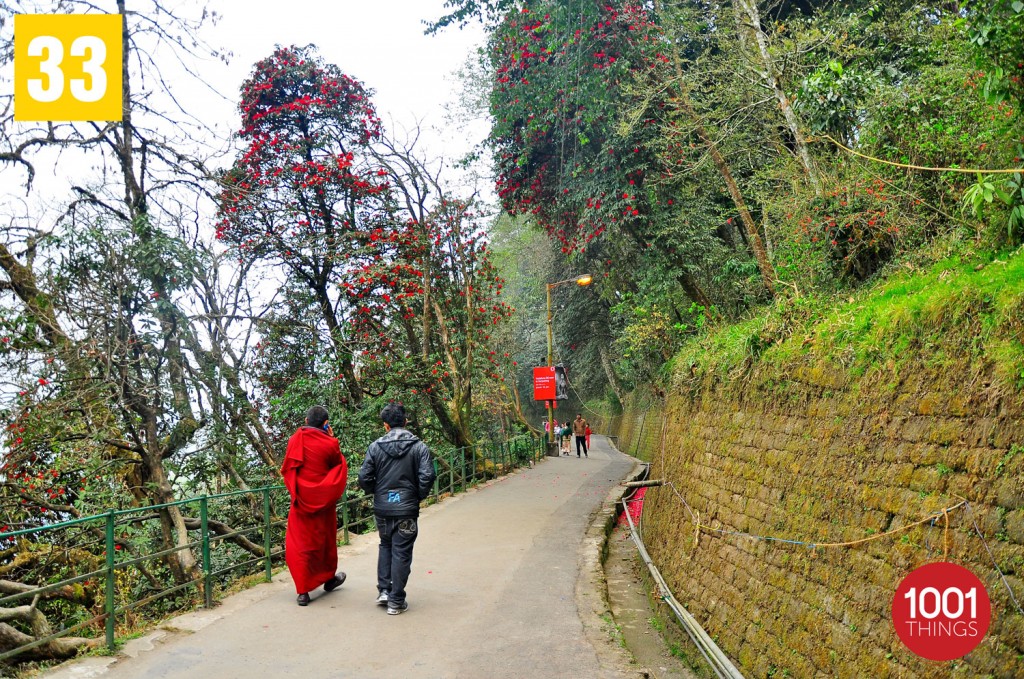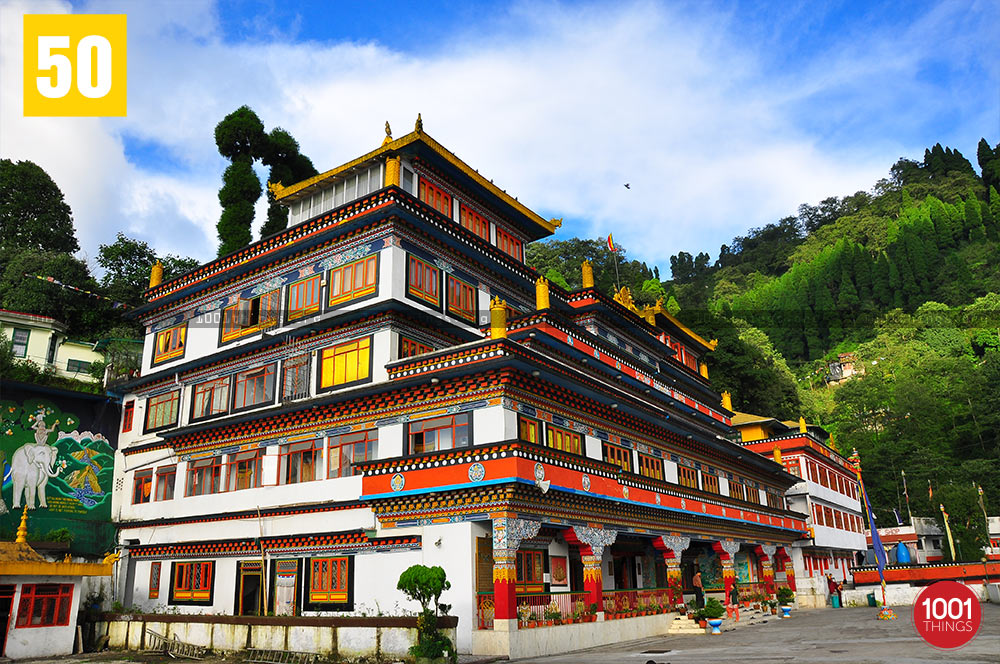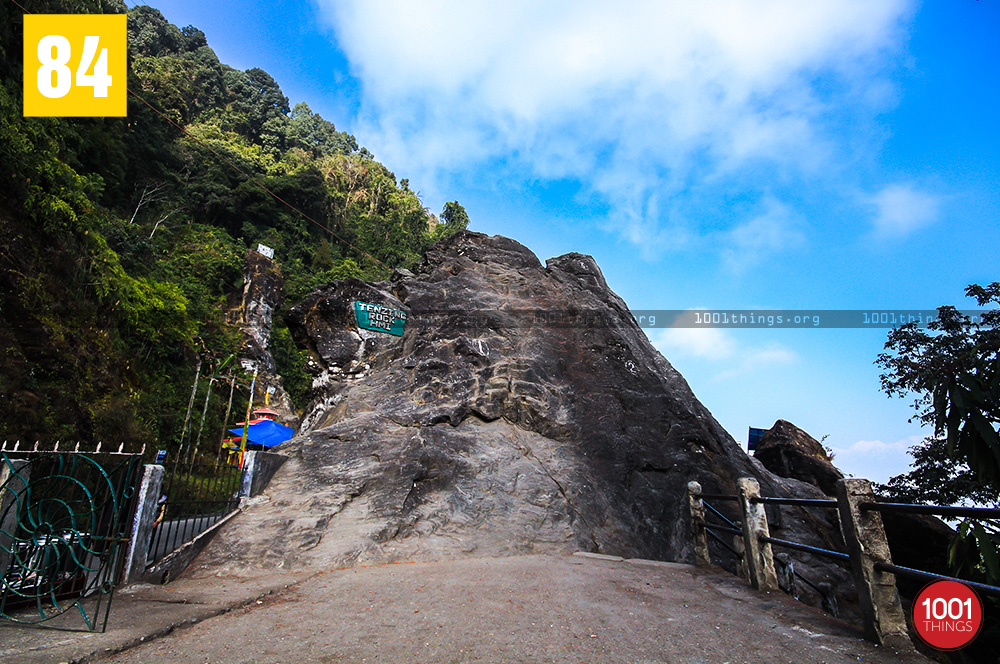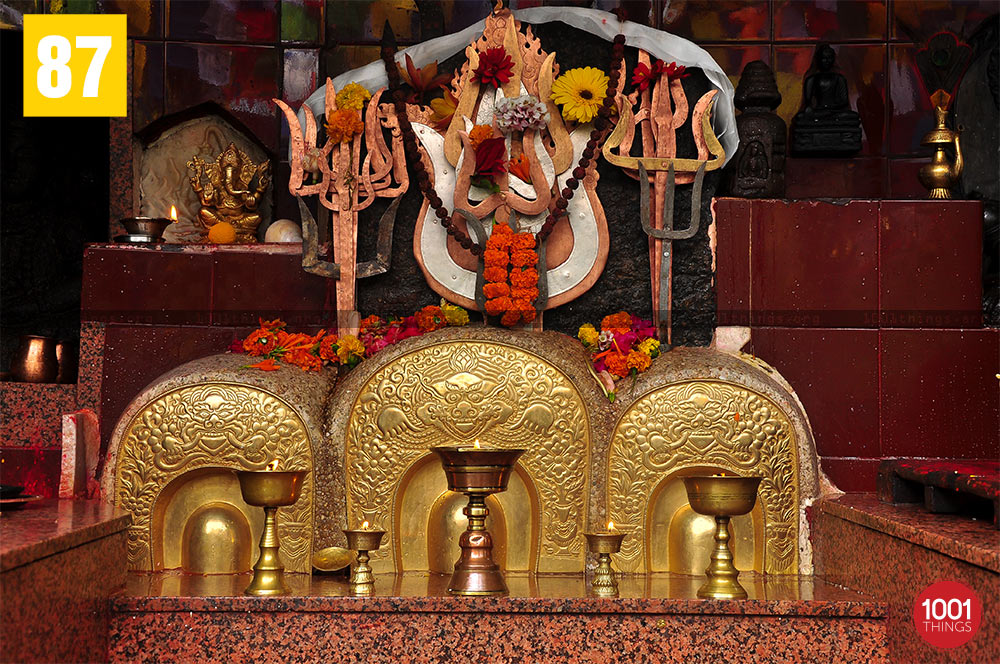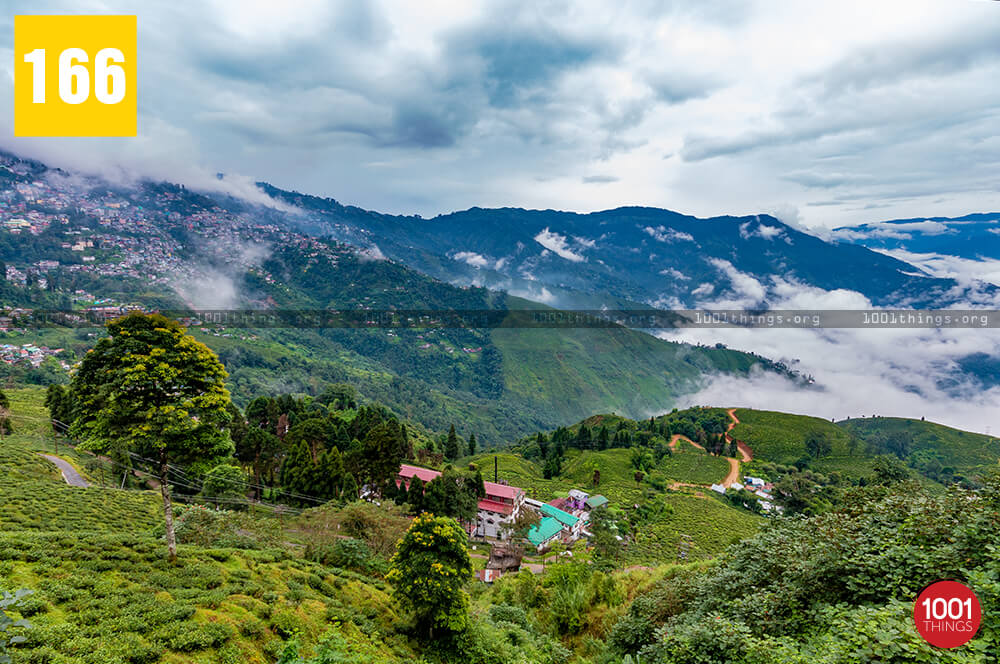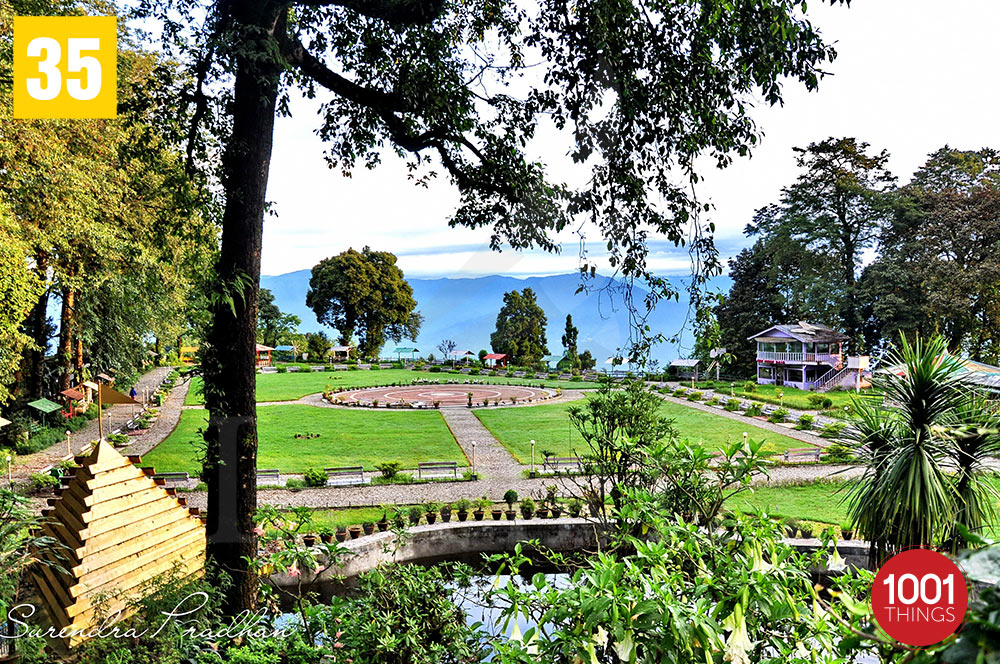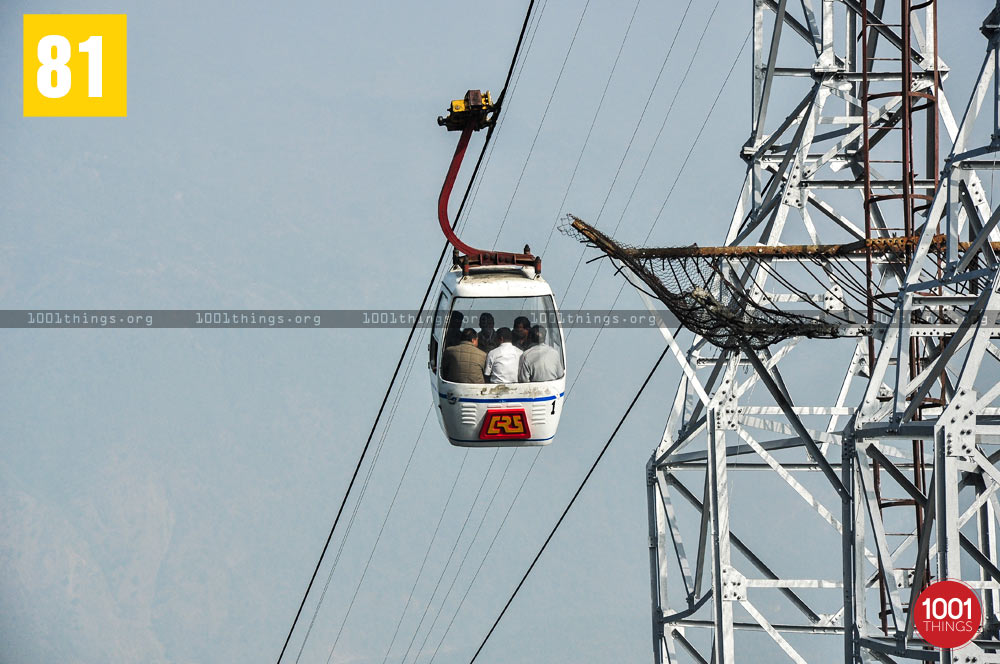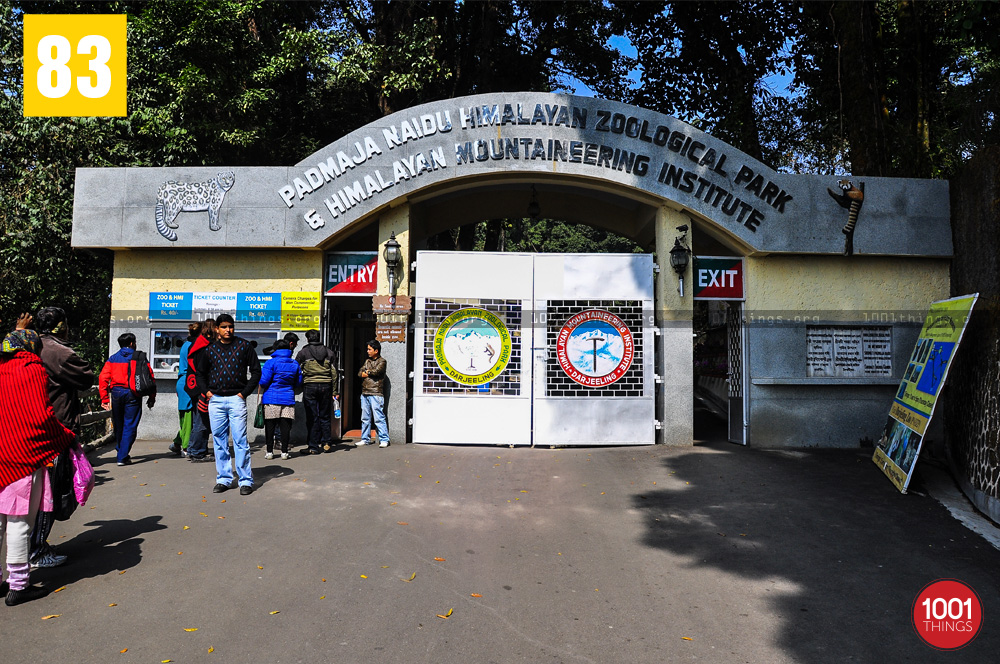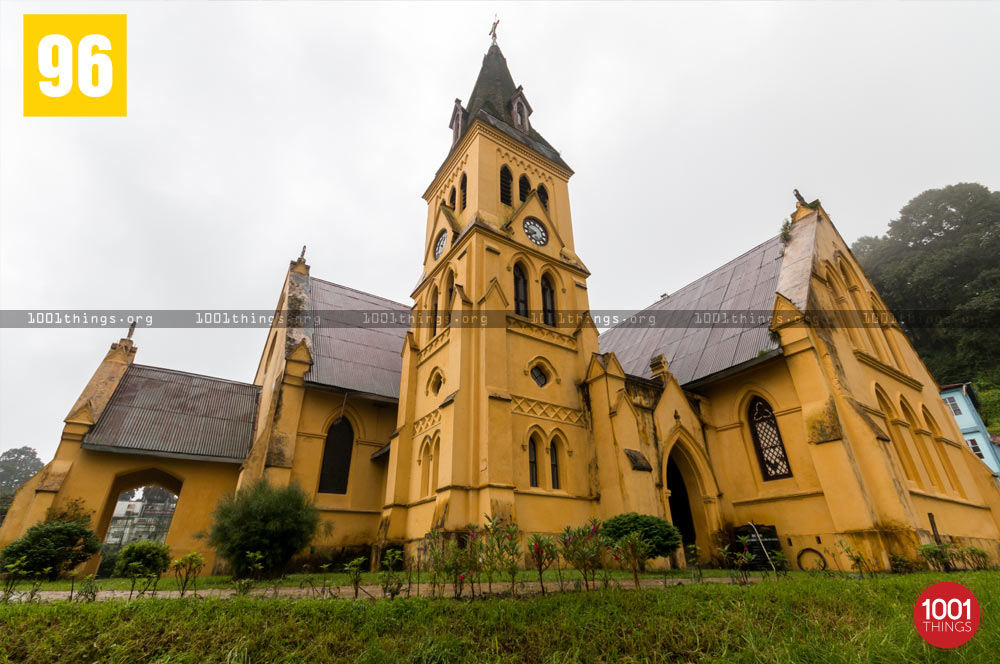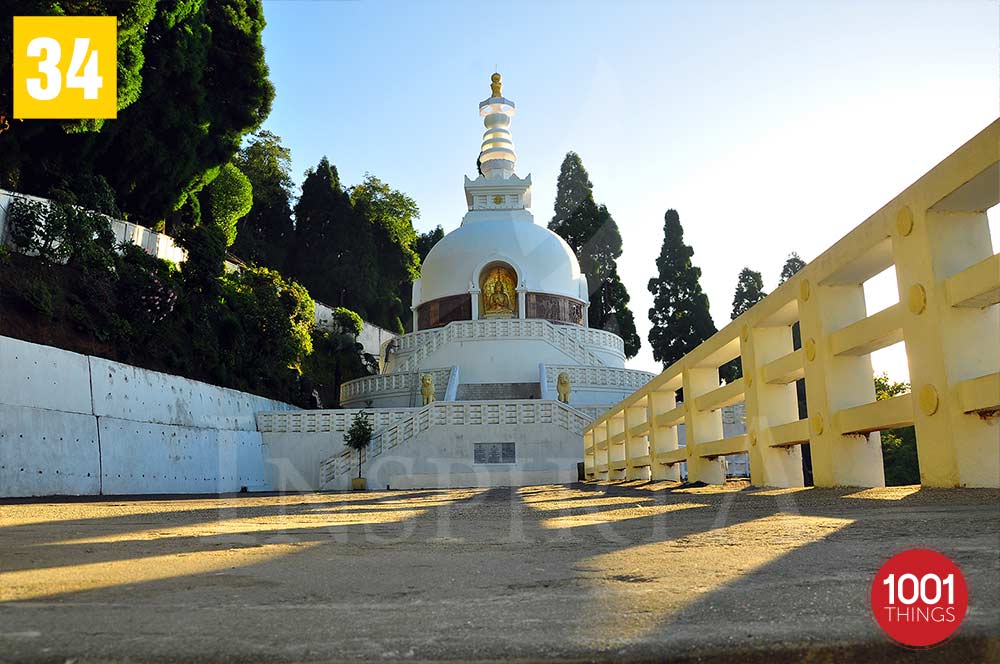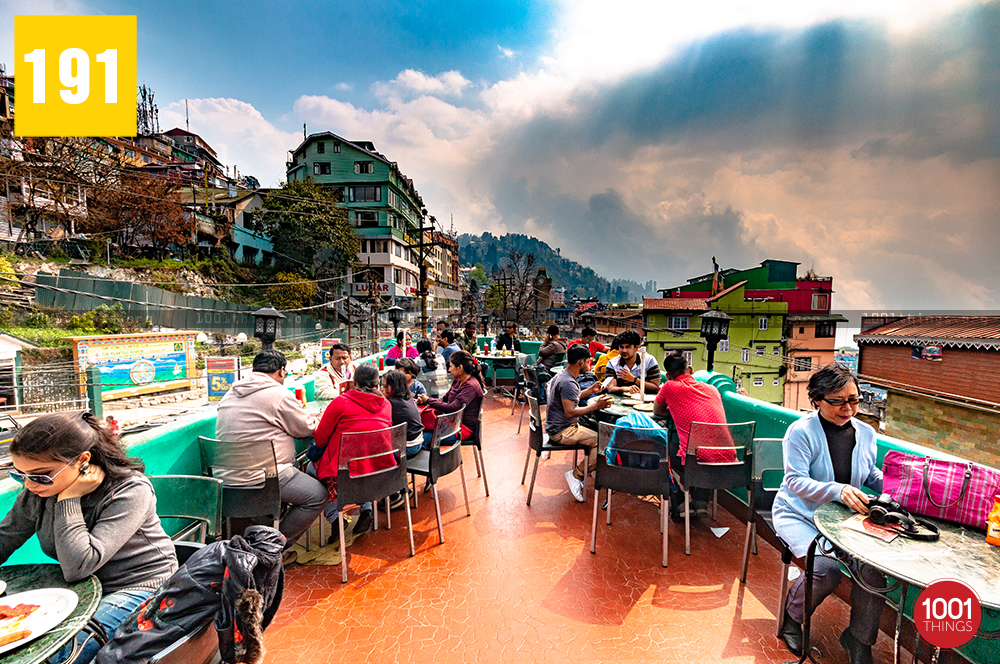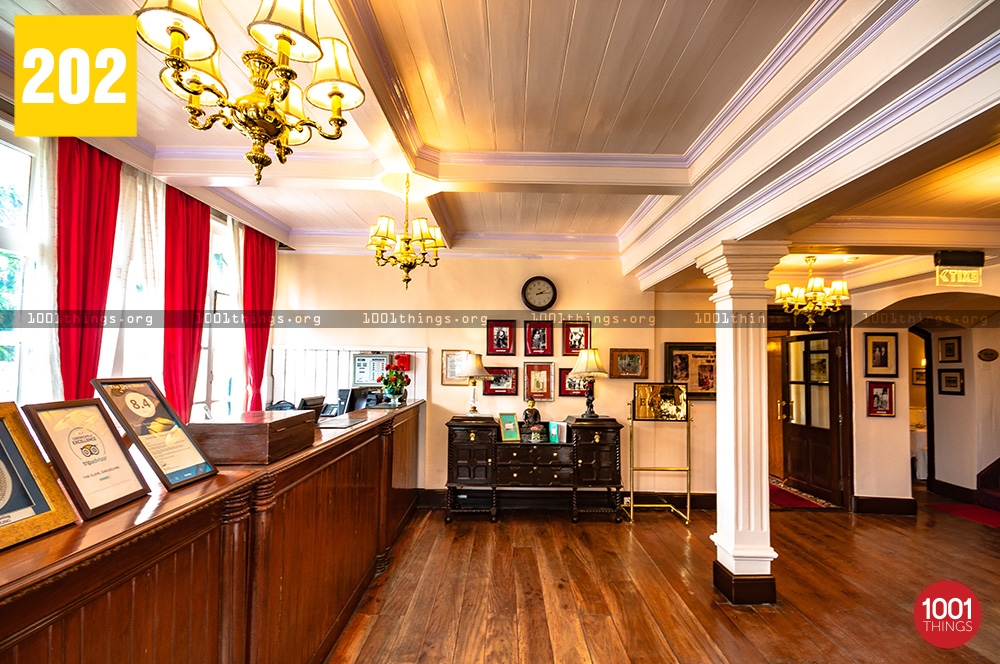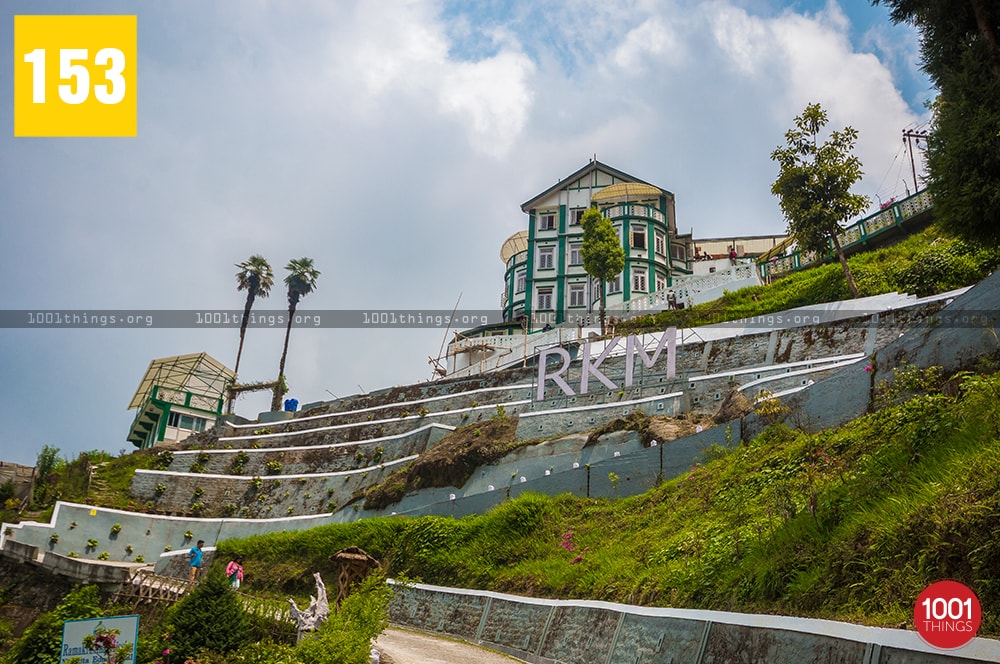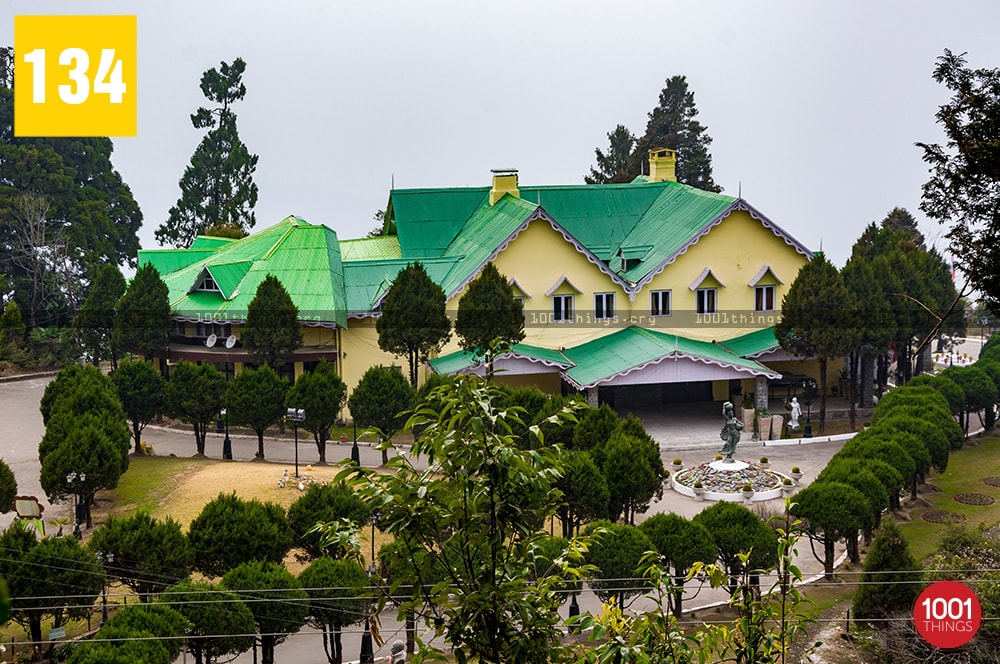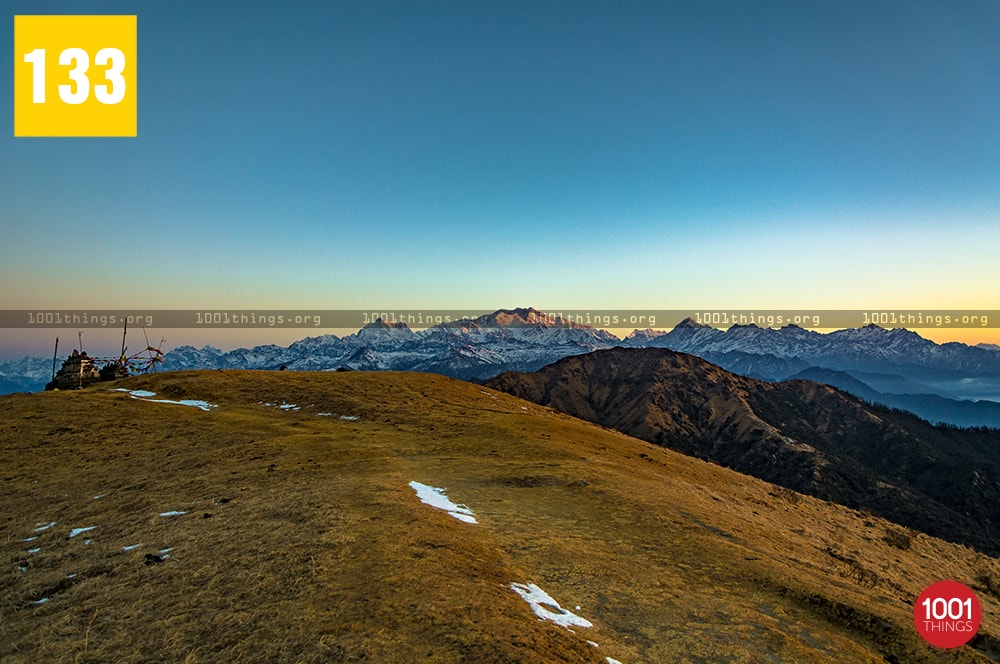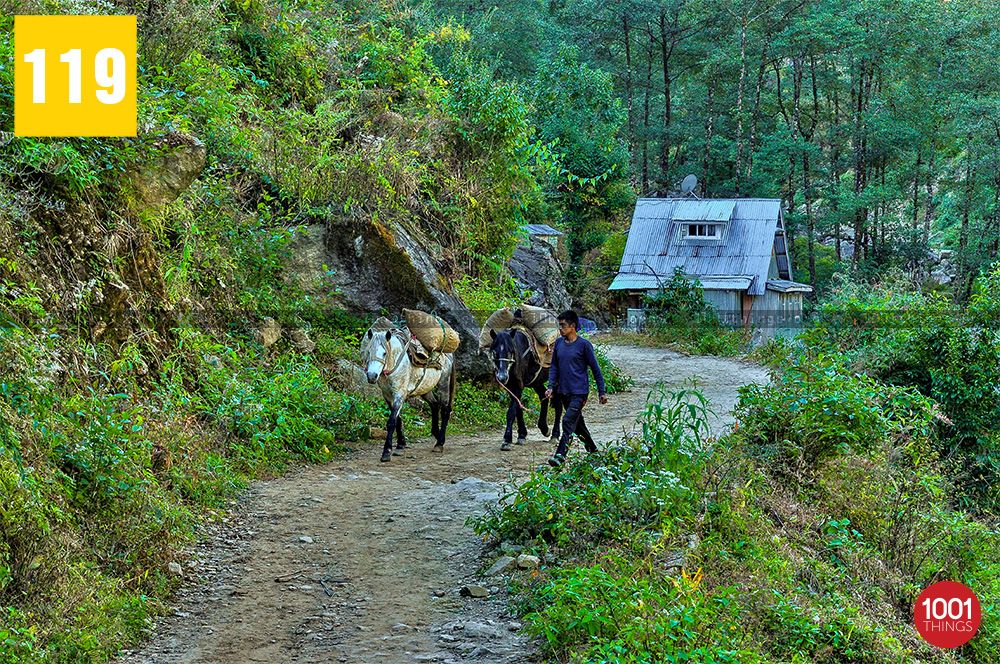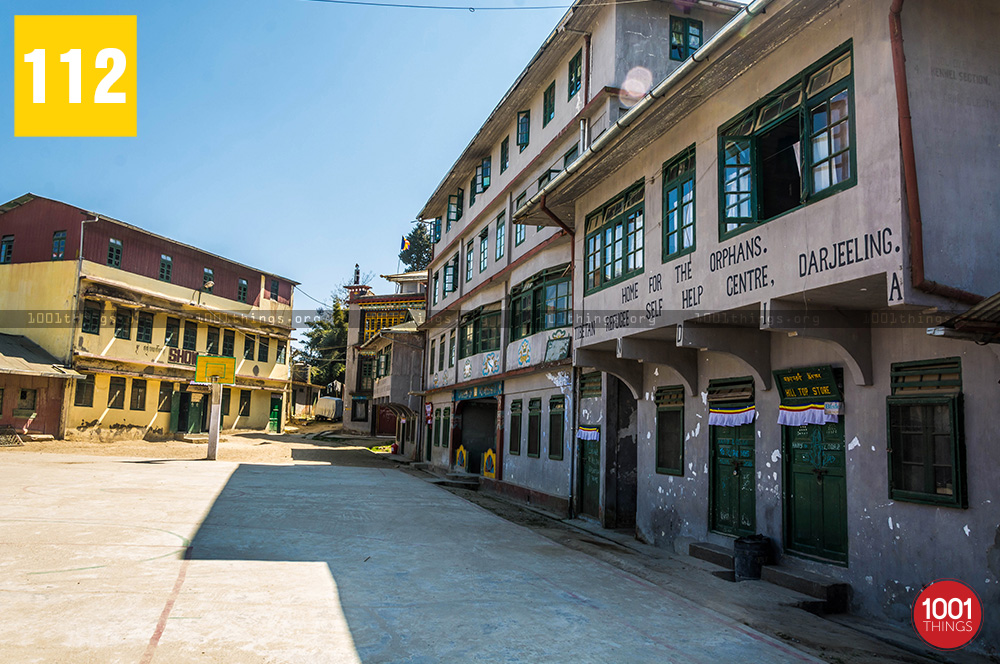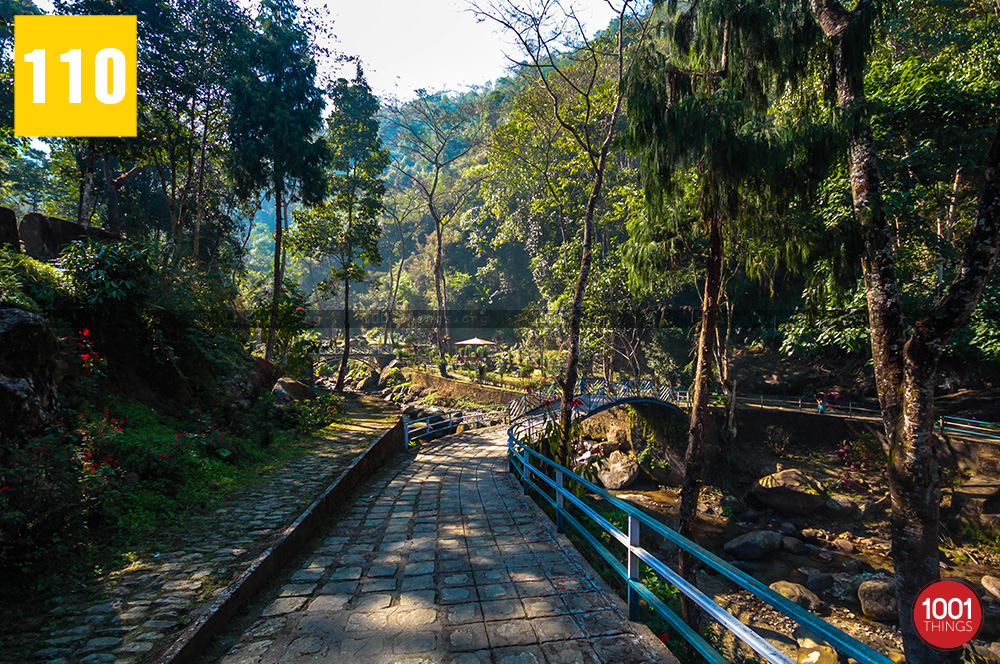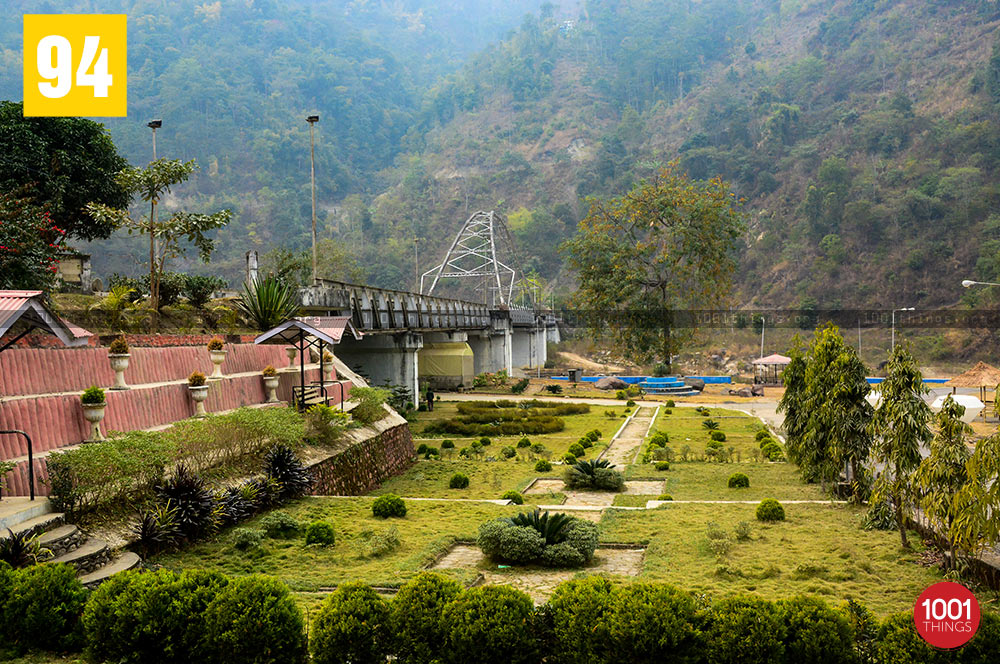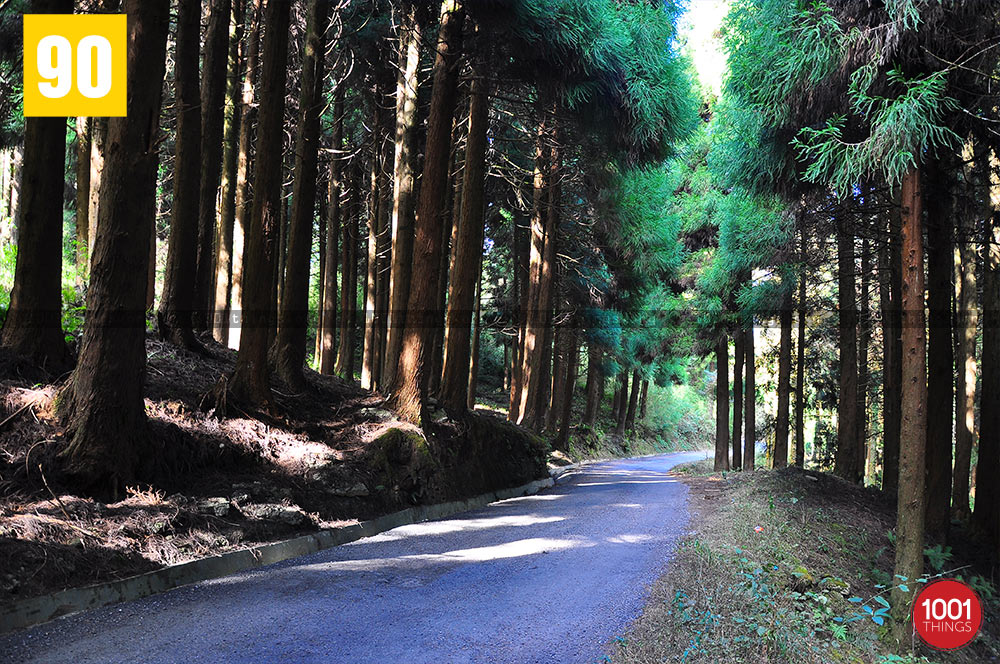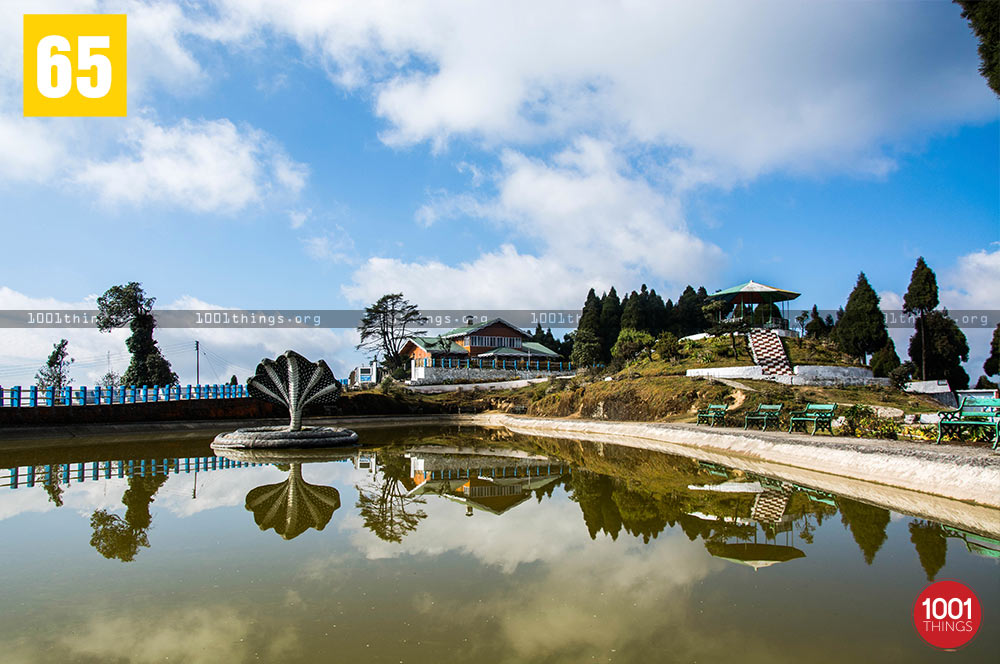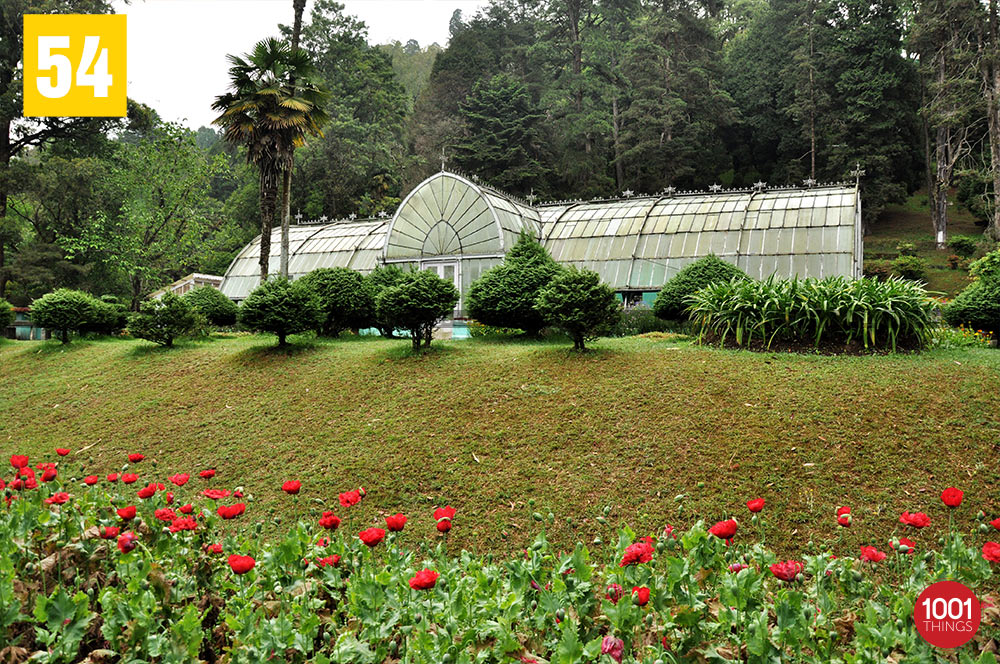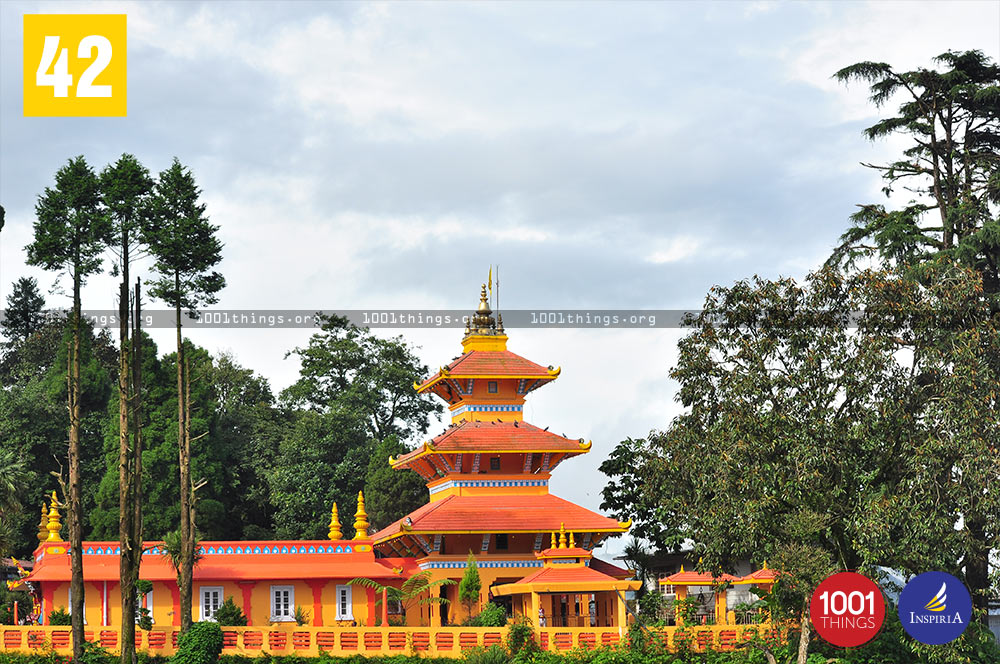TOP Places to Visit in Darjeeling
Darjeeling is a quaint town in the state of West Bengal. Set in the foothills of the Himalayas, the town was once a summer resort for the British Raj elite. In the present days the town is known around the world for its tea; Darjeeling Tea. It is also one of the most popular tourist destinations in India and is at an elevation of 2,000 meters (6,700 ft.) with Kanchenjunga as the backdrop.
Climate in Darjeeling
The weather in Darjeeling is chilly for most of the year. The town has a temperate climate with it’s annual maximum temperature being 17.2 ℃ and the annual minimum temperature being -7.2 ℃. It rains almost half the year in Darjeeling, with the highest rainfall being in July. Darjeeling also witnesses snowfall albeit not yearly but at least once a month in the winter months i.e. December, January and February.
How to Reach Darjeeling
The nearest airport to Darjeeling is Bagdogra airport which is 67.4 Km away. Once you get to the bagdogra airport, you have to travel for almost 3 hours via road. The nearest Railway station to Darjeeling is New Jalpaiguri (NJP) which is 71.3 Km away. Once you reach NJP the distance to Darjeeling is quite similar as from the airport, a 3 hour drive via National Highway 110 and Matigara – Kurseong Road.
Darjeeling is one of the most popular hill stations because this place has so much to offer. From the tea state greenery to some awesome British architecture various other adventures the place offers it all. Below are the places one must visit when travelling to Darjeeling
50 PlACES TO VISIT IN DARJEELING
Darjeeling Himalayan Railway
Built around the year 1879 and 1881 Darjeeling Himalayan Railway (DHR) is also popularly known as a Toy Train. It is a narrow gauge railway which is only 2 ft long. This railway line is one of the most popular tourist attractions in Darjeeling. Running from Darjeeling to New Jalpaiguri via various stations like Batasia Loop, Ghum, Rongtong, this train ride offers picturesque views along the way. DHR has been extremely popular since early on for its exhilarating experience. The UNESCO declared the Darjeeling Himalayan Railway a World Heritage Site on 2nd December 1999, just within a decade of its establishment. It is a train ride like nowhere else in India and that is what makes it a never to miss spot in Darjeeling.
Location: Darjeeling
Timing: 8 AM to 12 AM
Entry Fee: 600 Rs per head (for Diesel Engine locomotive), 1000 Rs per head (for Steam Engine locomotive)
Tiger Hill Darjeeling
Anyone who has heard about Darjeeling has definitely heard of Tiger hill. People know this famous hilltop, which has an elevation of 8482 ft., for its scenic view of Mt. Everest, Mt. Kanchenjunga, and various other Himalayan peaks. You can reach it by taking a four-wheeler, especially a jeep that costs about Rs 12,00 to Rs 18,00. It is 11 Kms from Darjeeling town. For the more adventurous souls, they can even hike to the hilltop crossing over various tea gardens. People know Tiger Hill more than anything for its sunrise and the views of Everest and Kanchenjunga, which bask in the golden light in the early hours of the morning. The hill is also the summit to Ghoom Railway and is nearby the Senchal Wildlife Sanctuary.
Location: Tiger Hill, Senchal Road, Darjeeling
Timing: Sunrise to Sunset
Entry fee: Free Entry
Batasia Loop Darjeeling
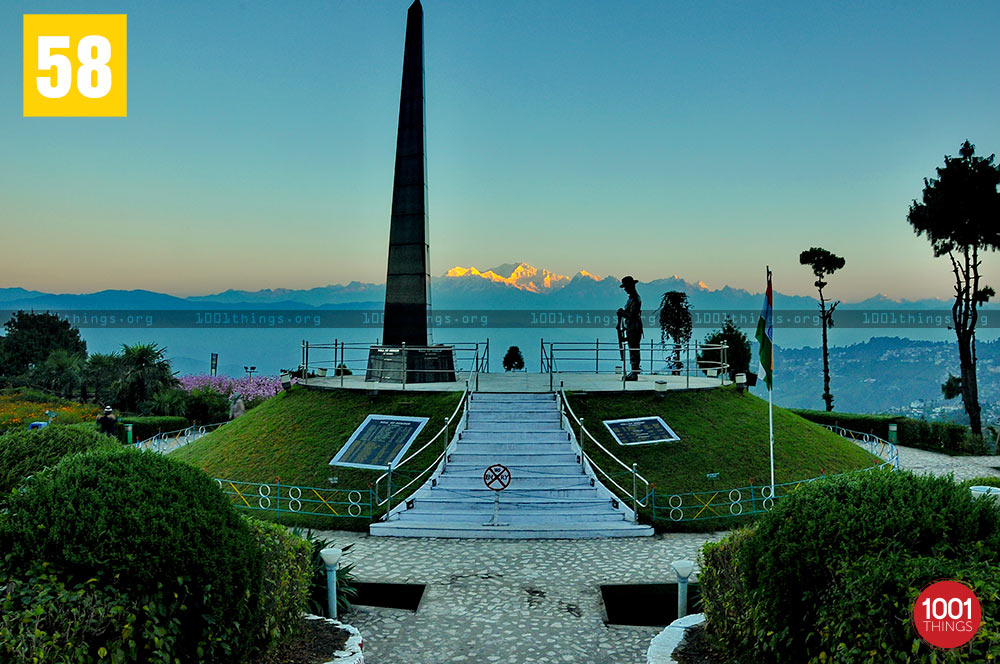
Another huge tourist attraction, Batasia loop is immensely popular for its 360 degree view of Darjeeling town and the surrounding himalayas. You should not miss the view of Mt. Kanchenjunga from the loop. One of the best ways to enjoy the view here is by taking the toy train ride. Another way is to drive up to the hilltop and take in the view. Not only the view but the whole scenery at the Batasia Loop is something straight out of a fantasy world. A spiral railway track, Flower beds, little shops around, the greenery and of course, the backdrop of the Himalayas.
Location: Ghum, West Point, Darjeeling
Timing: 5 AM to 8 PM
Entry fee: Rs 15 per head
Sandakphu Trek Darjeeling
Darjeeling apart from being a popular hill station, known for its quaint views and historical significance is also a home for adventure lovers. Numerous trekking and hiking trails cover Darjeeling. Among the many, the most renowned is the Sandakphu Trek. Set at an elevation of 11,929 ft. Sandakphu trek is a dream for adventure seekers. Running along the Singalila Range, the trek offers spectacular views which fills one with extreme satisfaction.
A trek to Sandakphu also means that you pass through Singalila National Park, where you get to witness nature in its full bloom. Sandakphu Trek starts from Manebhanjang, Chitire, Meghma, Tonglu, Tumling, Gairibas, Kalapokhri, Bekhe to Sandakphu. At the summit is a small village and the best views of the majestic mountains mt. Everest and Kanchenjunga among the many others.
Location: Starts at Manebhanjang
Chowrasta and Mall Road
It would not be wrong to call Chowrasta the heart of Darjeeling. This is the main market square of Darjeeling town, hence a place always filled with crowds. Chowrasta which literally translates to ‘four roads’ is located at the ridge of Darjeeling hill. Whether night or day this place bustles with locals and tourists from all over the world. You can find everything at this town square, from food to cloth shops, souvenir shops, and various other establishments. This is the hangout space where Darjeeling comes alive.
Location: The Mall, Darjeeling
Timing: 10 AM to 9 PM
Druk Sangag Choling Monastery, Darjeeling
Dali is a place located 5 km away from Darjeeling town. This monastery is an architectural marvel of this small place. Also known as Druk Sangag Choling Monastery, it was built in 1971 during the tenure of Kyabje Thuksey Rinpoche. Drukchen Rinpoche XII, who is considered the leader of the Drukpa Kagyu sect, resides in the monastery, which belongs to the Kagyupa sect of Buddhism. This monastery is also a school for practising and new learning local monks. The monastery is certainly an architectural marvel that represents Dali.
Location: Hill Cart Road, West Point, Darjeeling
Timing: 5 AM to 7 PM
Entry Fee: Free Entry
Bhutia Busty Gompa, Darjeeling
Bhutia Busty Gompa was originally situated at the Observatory hill. The original monastery was a part of Phodong Monastery in Sikkim. They brought the Monastery dedicated to the Nyingmapa Sect of Buddhism over to Darjeeling in 1879. Bhutia Busty Monastery gets its name from its current location where it is situated, Bhutia Busty. They shifted the monastery to its current location in 1879. An earthquake heavily damaged the monastery in 1934, and they later renovated it. They built the monastery in a Tibetan architectural style, and it contains various old Buddhist scriptures. However, the temple treasures the book called ‘Book of the Dead’. The monastery is just a kilometer away from the main town which makes it an awesome place to visit.
Location: Bhutia Busty Road, upper Bhutia Busty, darjeeling
Timing: 10 AM to 4 PM
Entry Fee: Free Entry
Tenzing Rock
The rock also attracts a lot of people to Darjeeling. They named it after Tenzing Norgay Sherpa, the first man to climb Mount Everest in 1953, along with Sir Edmund Hillary. Tenzing spent most of his younger years and his years after the Everest summit in Darjeeling, which was his home. The Tenzing Rock is currently used by the Himalayan Mountaineering Institute (of which Tenzing Norgay Sherpa was the Director of Field Trainer) to train aspiring climbers in rock climbing. This rock is specifically named after Tenzing Norgay because he used to practice climbing on the same rock. During Prime Minister Jawahar Lal Nehru’s visit to HMI, Tenzing Norgay demonstrated a climb on the rock without any safety equipment.
Location: Jawahar Parbat, Darjeeling
Timing: 8 AM to 5 PM
Mahakal Mandir Darjeeling
Situated at the top of observatory hill, Mahakal Mandir is one of the most significant temples for devotees of Lord Shiva. But this temple is not necessarily a hindu only temple rather it is a fine coexistence of two religions Hindu and Buddhist. According to legends, there once used to be a Buddhist Monastery where the Mahakal Temple stands today. From the outset, one can see a beautiful amalgamation of Buddhist prayer flags hanging across the whole place, yet the architecture reflects a Hindu style. Not only this, but there also sits a pundit and a monk together which reflects the religious amalgamation in the place. Apart from the main Mahakal mandir there are several other small temples dedicated to Hindu Gods like Kali, Durga, Ganesh and Hanuman. It takes a 20 minute trek to reach the Mahakal Mandir from the road.
Location: Chauk Bazaar, Darjeeling Timing: 7 AM to 7 PMEntry Fee: Free Entry
Happy Valley Tea Estate
Established in 1854 by a British elite Mr. David Wilson, the tea state is located at an altitude of 6,900 ft, making it one of the highest tea estates in the world. They called it Wilson Tea Estate until the year 1903 when they changed its name to Happy Valley Tea Estate. It spreads across an area of 437 acres. Happy Valley Tea Estate is a major attraction in Darjeeling, of course because of tea but also because you can take a whole tour of the estate. It includes witness tea plantation to tea plucking and even processing of the tea inside the factory, from where it comes out as the unique Darjeeling Tea. An array of flavors of tea are there for tasting with shops selling the flavors. The place adds to the uniqueness of Darjeeling hills and really makes it shine as Darjeeling is known for its tea around the world. It is just 3 Km away from the main town and visiting this tea estate can also lead you down the path of history of tea plantations in the hills.
Location: Lebong Cart Road, Chauk Bazar, Darjeeling
Timing: 8 AM to 4 PM (Tuesday to Monday)
Entry Fee: Rs 100 per person
Shrubbery Nightingale Park
It is another major public attraction in Darjeeling. Treasured by both locals and tourists, this public park is a spectacle in itself. They cautiously planned a colonial style garden and filled it with greenery and flowers. During the colonial period, the park was a courtyard of a Bungalow owned by a British elite Sir Thomas Tartan. The park is like an amphitheatre with mt. Kanchenjunga and the himalayas as its backdrop. The view of the mt. Kanchenjunga from here is some of the best, especially during the golden hours (Sunset and Sunrise). The park was completely destroyed in the year 1934 by an earthquake which even led to the closing of the park. They later renovated it, making changes in the layout of the pathways and opening it to the public. It is located just 10 minutes away from Mall Road which adds to its popularity.
Location: Richmond Hill, Darjeeling
Timing: 7 AM to 8 PM
Entry Fee: Rs 10 per head
Darjeeling Rangeet Valley Ropeway
Darjeeling Rangeet Valley Ropeway presents views of Darjeeling hills which cannot be seen otherwise. This 16 car ropeway runs for 8 kms from Singamari to Singla Bazaar while making various stops at Tukver, Burnesbeg and Singla tea estates. Established in the year 1968, the ropeway descends from an elevation of 7,001 ft to 801 ft, the descent takes 45 mins. The 45 minute ride opens up to views of lush green tea states, beautiful landscapes of the Darjeeling hills, the snow capped mountains, nearby forests.
Location: Singamari, Darjeeling
Timing: 10 AM to 4 PM (Winter and Monsoon), 10 AM to 2 PM (Summer and Autumn)
Entry Fee: 200 per head (For Adults), 100 per head (For children aged between 3 to 8 years)
The Padmaja Naidu Himalayan Zoological Park
It is the largest high altitude zoo in India, set at the elevation of 7000 ft. The Zoo was established in the year 1958 and named after Padmaja Naidu, daughter of Sarojini Naidu. The zoo being a popular tourist attraction attracts almost 300,000 visitors annually. Padmaja Naidu Himalayan Zoological Park has captive breeding programs for Snow Leopard, Red Panda and endangered Himalayan Wolf. The zoo is also home to Gorals, Siberian Tigers, Himalayan Salamanders and various endangered birds. There are also 200 species of plants including Oak, Birch and Alder. The zoo is also a hub for Central Zoo Authority of India’s Red Panda program and is a member of the World Association of Zoos and Aquariums. It is spread across 67.56-acre.
Location: Darjeeling-Jorethang Road, Near Birch Hill Resort, Jawahar Parbat, Darjeeling
Timing: 8:30 AM to 4:30 PM (Summer), 8:30 AM to 4 PM (Winter), Closed on Thursdays.
Entry Fee: Rs 20 for Indians and residents of SAARC, Rs 50 for Foreigners, Rs 10 for carrying Cameras
St. Andrews Church
St. Andrews Church is an architectural marvel among the various British era architecture in Darjeeling. The Church is named after Saint Andrew the Apostle and the foundation stone for the structure was laid down on St. Andrews day on Nov 30th 1843. Lakhs of tourists visit the church every year, mainly due to its architecture and location on Darjeeling’s famous Mall Road. The church has faced several challenges over the years, including lightning strikes and major earthquakes. After being struck by lightning in 1867, parts of the church were reconstructed and renovated. It took a decade for the church to reopen in 1877. The church’s famous clock tower was built in 1833. Still to this day St. Andrews Church is one of the most visited places in Darjeeling by the tourists.
Location: Chauk Bazaar, Darjeeling
Timing: 9 AM (Sundays Only) March to November, 9:30 AM (Sundays Only) December to February
Entry Fee: Free Entry
Japanese Temple and Peace Pagoda
Another popular place to visit in Darjeeling, the Peace Pagoda is a Japanese Style Buddhist Stupa. Nichidatsu Fuji, a Japanese Buddhist Monk, built it between the year 1885 to 1985. The structure took a total of 36 months to complete. People have built this peace pagoda among the many peace pagodas around the world as shrines to world peace. There are 6 such pagodas in India alone and more than 50 around the world. In Darjeeling however there is also a Japanese temple along with the Peace Pagoda. The purpose of building a peace pagoda was to promote peace and unity among people worldwide, regardless of their race, color, or creed.
Location: West Point, Darjeeling
Timing: 4 AM to 7 PM
Entry Fee: Free Entry
Mount Hermon School, Darjeeling

Mount Hermon School is a co-ed school in Darjeeling founded in 1895 by Emma L. Knowles of the British Methodist Episcopal Church. When the school first opened, it was named Arcadia, but the school later changed the name to Queen’s Hill School. The present name ‘Mount Hermon School’ came into existence during a prayer meeting around Mrs. Kniwles’ fireplace. The school has gone through the test of time for the past 126 years and maintains an embodiment of excellent school education and curriculum in Darjeeling and around North Bengal. The motto at Mount Hermon is “Non-Scholæ Sed Vitæ Discimus” which is obtained from a Latin phrase, meaning “We do not learn for school, but for life”. The school follows an American style of education, even though the region has a British-influenced education system. Apart from education the school also boasts its architecture. The grand 18th century styled buildings feature Collegiate Gothic design with Tudor arches and streaked windows that dominate the structure The school is upto senior secondary level with three branches of studies Science, Arts and Commerce. It has all the indoor and outdoor facilities, including laboratories, a craft room, a lounge, dining rooms, a library, a music room with practice rooms for piano, and separate dormitories for boys and girls.
Location: North Point, Singamari, Darjeeling
Keventer’s Darjeeling
Keventer’s Darjeeling is a maiden name when it comes to restaurants passed down from history. It is a quaint restaurant that fits perfectly with the historical setting of Darjeeling. It was established in 1911 by Edward Keventers thus its name Keventer’s. Both locals and tourists cherish the restaurant, and it is usually jam-packed. The base of the food at this restaurant is a classic colonial platter with English breakfast being one of the most popular dishes. It has been serving the famous Darjeeling tea and relishes from the English menus since a century now. Apart from the food, one of other reasons people go to this outlandish eatery is because of the view one gets from here. The building and the setting incites a visitor from the get go. The architecture of the restaurant is quite basic but what meets the eye is its open terrace setting and the not so common round walls on one side. The menu has a variety of vegetarian and non-vegetarian items with drinks on the side.
Location: Nehru Rd, Darjeeling, West Bengal
Timing: Breakfast, Lunch, Dinner
Pricing: Meals starts from 500 for two
The Elgin Hotel
The Elgin Hotel is another historical architecture in Darjeeling. This grand palace-like structure was indeed a palace once. It used to be the summer residence of Maharaja of Cooch Behar. Tracing its roots back to the British Raj, the Maharaja built it in 1887. The Elign has passed the test of time and is standing regally after almost a century and half. It is right at the heart of Darjeeling and is situated at an elevation of 6000 ft. Today this magnificent architecture serves as a 4 star hotel, one of the best in town. Apart from the architectural beauty, the hotel has also brought together the blend of historical and modern interior settings. Talk about amenities, the hotel has everything you can think of from a luxurious spa to wifi, mini bar in all suites a multi cuisine restaurant. There is also a generous amount of outdoor space where one can enjoy strolls. The hotel has been a favourite of various celebrities and the who’s and who’s. Definitely one of the prides of Darjeeling, The Elgin Hotel is an experience in itself.
Location: Chauk Bazaar, Darjeeling
Pricing: Rooms start from 10,000 Rs
Windamere Hotel, Darjeeling
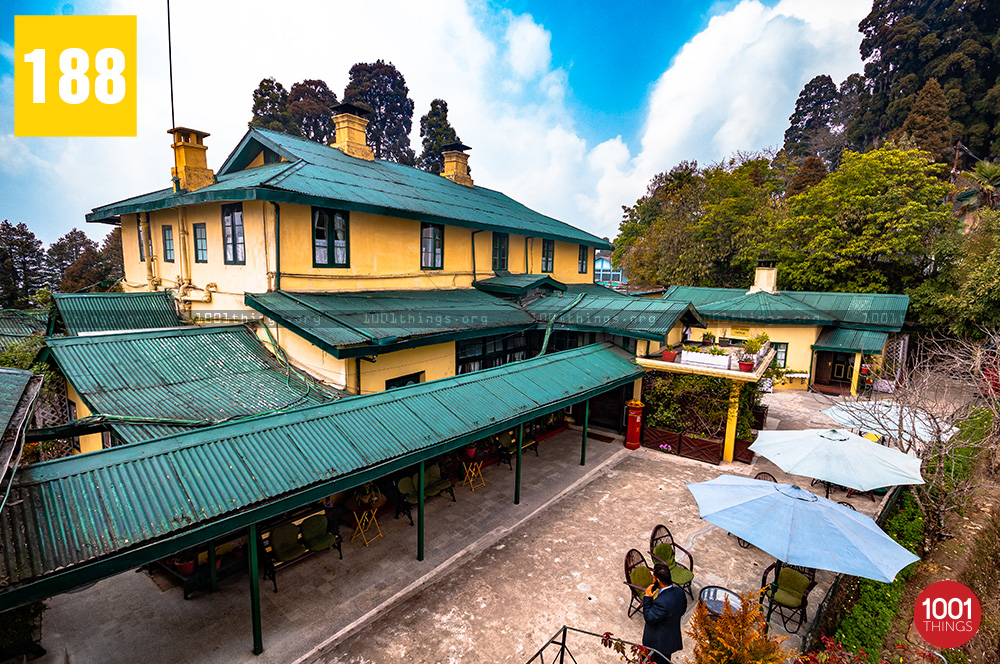
The Windamere Hotel is a heritage hotel located in Darjeeling. They established it in the 19th century, and the charm still remains there. It was mainly built to serve the purpose of housing for the British and Scottish tea planters. The property was turned into a hotel just before World War II. It is a luxury hotel where the interior of each room speaks the 19th century English decor style. Windamere Hotel has also been awarded several awards among which is the Honor for outstanding Hotels in India awarded by the Prime Minister at the first National Awards Ceremony. In 2014, it was awarded the Best Heritage Hotel of 2014 by the Safari India Award. People best know the hotel for the unrefined views of tea plantations. It also provides the pristine views of the mount Kanchenjunga. The hotel’s history also goes down to royalty as it is where Sikkim’s crown prince Palden Thondup Namgyal and his wife Hope Cook met for the first time in the year 1959. Boasting its historical significance, the hotel still hosts guests from all around the world.
Location: Observatory Hill, Darjeeling
Price: Rooms start at Rs 17,700 (for two)
Glenary’s Bakery & Cafe – Darjeeling
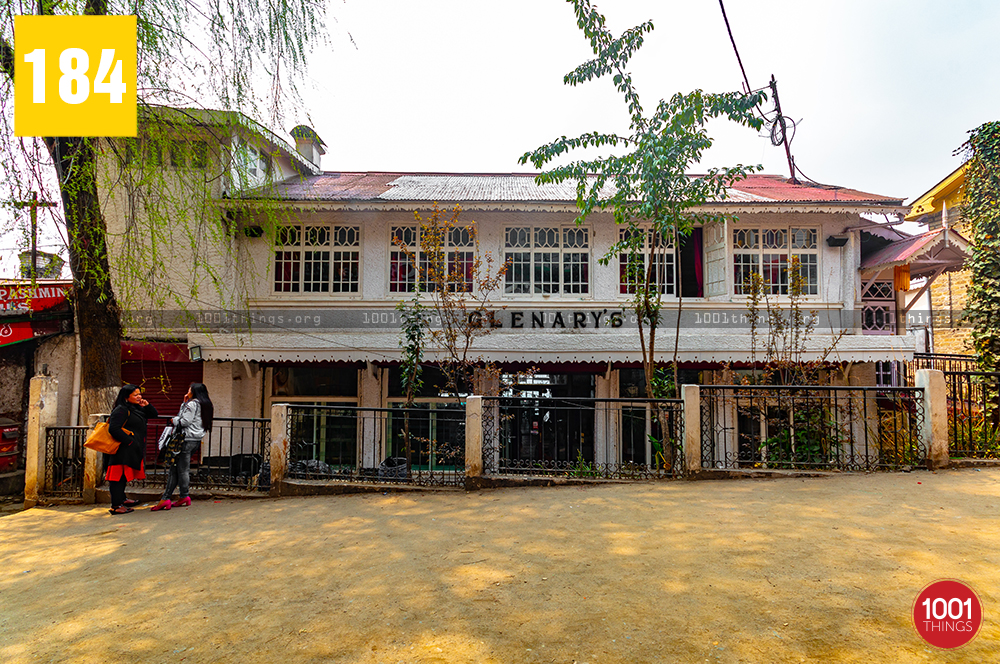
To put Glenary’s Bakery & Cafe’s popularity in context, if you ever visit Darjeeling and don’t grab a bite at Glenary’s your visit to Darjeeling is incomplete. The place is an extremely popular eatery in the town and is also considered the top restaurant in Darjeeling. This colonial era charm also portrays wonderful architecture. The two storeyed restaurant has three blocks. On the ground floor is a bakery which is always filled with fresh bakes. The first floor has a multi-cuisine restaurant with an open terrace seating space. Glenary’s also has a pub. It is on the basement level. Truly this restaurant is a combination of the bests. From a cosy ambience to good food and good vibes, this place offers it all.
Location: Chauk Bazaar, Darjeeling
Timing: Breakfast, Lunch & Dinner
Price: Rs. 1000 for two
Ramakrishna Mission, Darjeeling
Ramakrishna Mission Nivedita Educational and Cultural centre is one of the centres of Ramakrishna Mission & Ramakrishna Math, Belur Math, West Bengal. The centre runs with the ideals of Ramakrishna Deva, Sarada Devi and Swami Vivekanada which mainly focus on the spiritual development of each human being along with decreasing the suffering born of human existence.The mission has been actively carrying out social works, creating awareness, and empowering the society for its betterment. The Darjeeling centre is famous for their building and its history apart from their good deeds. The more than a century old colonial era building sits majestically and goes by the name Roy Villa.
Location: Lebong Cart Road, Darjeeling
Time: 10 AM to 5 PM
Entry Fee: Free Entry
Sabargram and Molley, Darjeeling
Sabargram is a popular spot among trekkers en route to Sandakphu- Phalut trek. This wide grassland serves as a perfect resting spot for the trekkers. Sabargram is 14 Kms away from Sandakphu and 7 Kms from Phalut. Standing at an altitude of 11,624 ft Sabargram gives away exceptionally magical views of the mountain ranges. On one side you will see the mighty Mount Everest and on the other side you will see Mount kanchenjunga. The place also has a wide variety of Rhododendron species, Fir trees and many high elevation plants. Though Sabargram is a resting spot for trekkers, there is only a single hut where the accommodation depends on the availability. But the place is great for camping and most trekkers prefer to camp rather than spending the night in the hut. The sunrise and the sunset views from here are a once in a lifetime experience.
Molley is another preferred location where trekkers decide to rest up for a night. This is a slightly advanced village if you will. This place has a number of huts with availability of a kitchen where trekkers can prepare food for themselves. Molley is just 2 Kms further down hill from Sabargram. Since the area is near international borders the place also has a SSB camp. The flora and fauna is equally rich here, which makes it an ideal place to rest up and soak in nature’s energy.
Location: Sandakphu-Phalut Trek
Gorkhey, Darjeeling
Gorkhey is a small valley/village in Darjeeling. The village is located near the Sikkim-Darjeeling border. It is an eccentric place representing the true soul of the hills. Surrounded by Pine filled hills, a stream flowing down the right in the middle of the village and some very unique houses, the village is no less than a place right out of a story book. The village is thinly populated. The village gets its name ‘Gorkhey’ from the river that flows through known as the Gorkhey Khola which acts as the border line for Sikkim and West Bengal. The place is renowned for its hospitality in the hills apart from the natural beauty it protrudes. Tho an agro based village, tourism has seen an increase in the recent years. Many people have also turned to owning homestay businesses due this. The main visitors coming to this place are trekkers on their descent from Phalut or Sandakphu.
Location: Gorkhey, Darjeeling
Price: Rooms start from Rs 1000 at Homestays
Lal Kothi, GTA Secretariat, Darjeeling
Lal Kothi is another historical building in Darjeeling. It was built by the Maharaja of Cooch Behar, Prasad Nath Roy in loving memory of his wife queen Bhawani Devi Roy. It would not be wrong to call this villa Darjeeling’s own Taj Mahal. Formerly known as ‘Gori Wilas’ this is also one of the oldest Buildings in Darjeeling. It got its current name from the 1978 Bollywood movie Lal kothi which was partly filmed here. Due to its scenic nature, Lal kothi and the places around it are a popular filming location choice of many moviemakers. It stands at a hill among the Magnolias, Rhododendron and Pine trees. This building has played so many roles over the years. A palace which once hosted lavish parties, occupied by the British, A tibetan School, DHGC secretariat and it is currency the office of the chief executive of GTA and the secretariat of GTA. A marvellous place with historical significance, certainly royalty.
Location: Limbugaon, Darjeeling
Phalut, Darjeeling
If you’re into adventure, you must definitely have heard about the Sandakphu – Phalut Trek. Phalut is the second highest peak in Darjeeling with the first being Sandakphu. The peak stands at an elevation of 11,811 ft. (3,595 m) and is near the international border between India and Nepal. It also serves as the state border between Sikkim and West Bengal. Phalut gets its name from a Lepcha word Fak-Luk which means Barren Peak. It is 53 kms away from Maneybhanjyang, which is the base from where the Sandakphu-Phalut trek begins. Phalut is a serene place to be at, with high elevation vegetation and grassland spread across. For an average trekker it takes about four days to reach Phalut.
Location: Phalut, Darjeeling
St. Joseph’s School – North Point, Darjeeling
History of St. Joseph’s School in Darjeeling: The founders of St. Joseph’s School established it in 1888 with the aim of building a fine school for boys in the hill town. Initially, the school ran from a temporary site called Sunnybank, but Brother Eugene Rostrat, a member of the school, was given the responsibility of constructing a new school building on top of Birch Hill called North Point. He employed 2000 people and carried out the construction work day and night. Finally, in 1891, the new school building was completed, and the school officially shifted to its new site.
Growth and Development of St. Joseph’s School: After the school moved to its new site, the number of students started increasing rapidly. In the following years, the school started welcoming students from countries such as France, Germany, Bhutan, Tibet, Thailand, Burma, Indonesia, China, and Nepal. According to the Educationtoday.co survey, St. Joseph’s School has been ranked No. 3 in India and No. 1 in West Bengal, making it an obvious No. 1 in Darjeeling. Additionally, the school has enrolled over 1200 students and is widely regarded as one of the best schools in India. The school has consistently maintained its reputation for quality education and has produced many successful alumni who have excelled in various fields.
Location: North Point, Singamari, Darjeeling
St. Paul’s School, Darjeeling
During the British Raj as the Anglo-Indian community in Calcutta saw a rise, John William Ricketts established St. Paul’s School in Calcutta in 1823. This establishment was later shifted to Darjeeling in the year 1864. The main reason for shifting the school over to the hills was health as the saying goes “A healthy body leads to a healthy mind”. Since nature is always in bloom in Darjeeling, it makes for a perfect place for students. The hilltop called Jalapahar is where St. Paul’s is located at an elevation of 7,500 ft, making it the Public School at the highest altitude in the world. The school, which is an all boys boarding school, has a campus area of 65 acres, and greenery surrounds it, providing stunning views of the Kanchenjunga Mountain Range in the distance.
Location: Jalapahar, Darjeeling
Srikhola, Darjeeling
Srikhola is a distant village in Darjeeling about 87 kms from the main town. The village is painted in green and is extremely picturesque. It’s fame comes from being en route to the Sandakphu-Phalut trek. Many trekkers enjoy spending time in this village during their descent from Sandakphu and Phalut. Srikhola is 16 Kms from Sandakphu. The trail descends steeply inside a dense forest filled with flora and fauna. From Phalut Srikhola is 30 Kms downhill. Trekkers need to travel through a dense Rhododendron and Magnolia forest. They also pass by other villages Gorkhey and Rammam on their descent. This village extrudes immense beauty which is why trekkers prefer this village as a rest spot after completing their Sandakphu-Phalut Trek. Srikhola is also ideal for calming walks in the forest, a swim in the river, fishing (especially trout fishing) and exploring the rich flora and fauna.
Location: Srikhola
Tibetan Refugee Self Help Centre
History and Purpose of Tibetan Refugee Self Help Centre: They established The Tibetan Refugee Self Help Centre in Darjeeling in 1959 to provide rehabilitation and support to Tibetan refugees who fled their homeland after the Lhasa uprisings. The refugees were initially provided with food, shelter and medical assistance by the centre. However, over time, it evolved to become a self-sustaining community that focuses on providing vocational training to refugees and promoting Tibetan culture and heritage.
Handicraft Production and Export: The Tibetan Refugee Self Help Centre trains artisans and craftsmen to produce various handicrafts such as Tibetan chuba, carpets, wood carvings, prayer wheels, and leather goods. The centre sells the handicrafts produced both in-house and exports them to more than 36 countries worldwide, earning a reputation for their high-quality production.. The production of handicrafts has become an important source of income for the centre and has contributed to the upliftment of the Tibetan refugee community in Darjeeling.
Gangamaya Park, Darjeeling
A Tourist Spot in Darjeeling. People visit Gangamaya Park frequently as it is a popular public park in Darjeeling situated just a kilometer or two from the Darjeeling Rock Garden. The park was built by GTA (formerly DGHC) with the primary aim of promoting tourism in the area. Additionally, the park’s construction aimed to lead to the development of the underdeveloped or least developed parts of Darjeeling.
The park’s many bridges were constructed to add a new flavor to it, setting it apart from other parks. The bridges and paths connecting them make this park an adventurous and fun place to stroll around. The park also features a lake at its center and waterfalls falling at various corners. People can enjoy and take in the beauty of the flowers and fauna by sitting on benches set up across the park.
Gangamaya Park: After the Aila Storm In 2009, the park suffered significant damage from the Aila storm, including the destruction of the lake. Although the park was later rebuilt and reopened, the authorities have not yet restored the boating services in the lake. The park remains a popular tourist spot in Darjeeling, attracting visitors with its vibrant flora, fauna, and natural beauty.
Location: Bloomfield Tea Garden, Darjeeling
Jamuni, Darjeeling
Jamuni provides a secluded place away from the town uproars. It is a popular picnic spot for the locals. Set at a distance of 12 Kms from Darjeeling main town, the place sees heavy crowds during winter. The area of Jamuni is 13 acres. Surrounded by the hills, forests and tea gardens Jamuni makes for an ideal place to spend a weekend to throw off that stress. Of all the things that makes Jamuni beautiful, the best is the river flowing right in the middle. The GTA has further developed the park and added new attractions like terrace gardens, boating spot, an arena for different events among the many others. One of the scenes in the Bollywood movie Barfi also featured Jamuni bridge.
Location: Jamuni, Darjeeling
Dhotrey, Darjeeling
Dhotrey: A Natural Paradise with No Electricity. The village is located in the vicinity of Singalila National Park in Darjeeling. Due to its proximity to the national park, the village is situated in a buffer zone. As a result, the village has no electricity, making it a place free from modern amenities. Dhotrey, despite its cut-off from modernity, is a natural paradise. The huts and farmlands fill the village, providing a beautiful sight to behold.
The village of Dhotrey came into existence in the early 1980s when the Forest Department collected logs from this place. They used a 5 km long ropeway to transfer the logs. The demolition of the ropeway during the mid-1980s resulted in a downfall in the village’s economy. Ever since then, Dhotrey has been through a lot.
Tourism Promotion and Tragedies: In the mid-1990s, the government promoted tourism to boost the village economy, but it was not an easy task. The village faced another tragedy in 2008 when a fire destroyed 33 huts out of the total 68. The Forest Department took the initiative to rebuild the village, and today there is a trekker’s hut in the village, along with other huts that offer a place to stay for trekkers. Despite the tragedies and challenges, Dhotrey remains a natural paradise, attracting many visitors with its beauty and serenity.
Location: Dhotrey, Darjeeling
Jorepokhri, Darjeeling
The place exactly suggests what the name ‘Jorepokhri’, made up of two words, ‘Jore’ and ‘Pokhri’, where the former means two and the latter means lake. The place’s main attraction is a wooden cottage standing as the link between the two lakes. The landscapers have done the landscaping in the place keeping in mind the cottage and its position. People visit this place to get a glimpse of the mount Kanchenjunga. People visit Jorepokhri because they can also find Himalayan Salamanders there. The best time to visit this place would be from October to March.
Location: Jorepokhri, Darjeeling
Lloyd Botanical Garden
Lloyd Botanical Garden is one of Asia’s best Gardens and an eminent tourist spot in Darjeeling. William Llyod donated a 40-acre land for the garden, which they named after him. They divided the garden into three sections, and they filled each section with Himalayan flora. They designated the top section for Himalayan plants, and it has plants from Sikkim. Ferns, conifers, and pines fill the middle section. The last section has a collection of exotic plants from all over the world along with some colorful ones. The garden also houses a collection of Orchids, and someone brought over a pair of living fossil trees from China. It is an extremely special place and a must visit when in Darjeeling. The Botanical Garden preserves several species of Bamboo, Oak, Magnolia, Arisaema, Cotoneaster, Rhododendron and many other plants.
Location: Chauk Bazaar, Darjeeling
Timing: 6:00 AM to 5:00 PM
Entry Fee: 20 Per Person (5 Rs for students with id card)
Lamahatta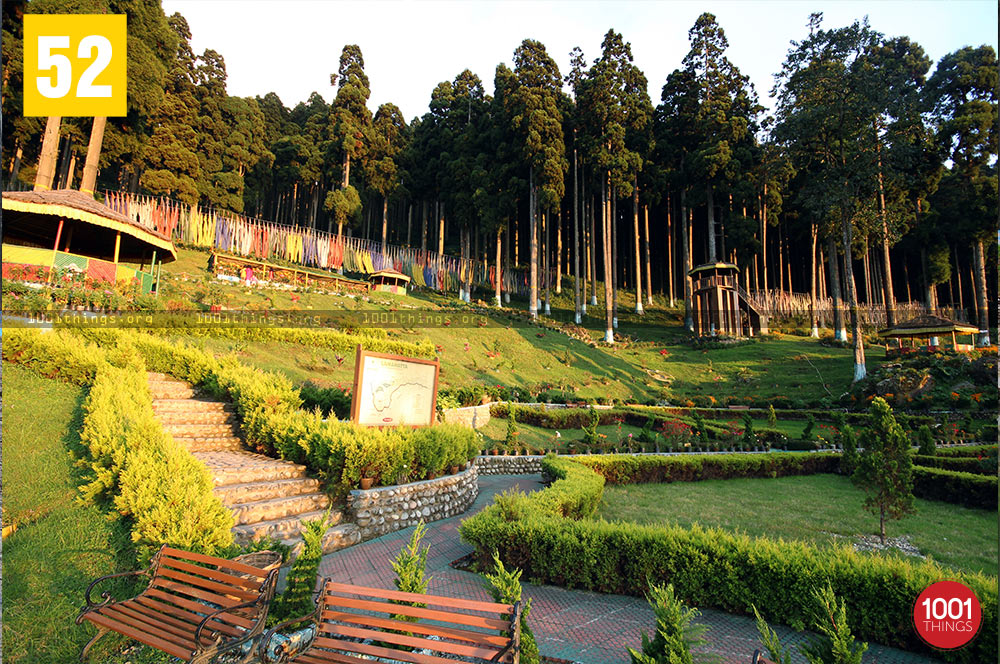
Lamahatta is an eco-tourism destination located almost 23 Kms from Darjeeling town. It is another place boasting the innate beauty. This place is a heaven for adventure seekers and just nature admirers in general. Walk, hike or just take a stroll you can do anything at Lamahatta. Couples admire this place because of its romantic atmosphere. A lake down the hill, surrounded by pine forest, wonderful views of Mount Kanchenjunga and Teesta rivers from the hilltop, undoubtedly a magical place to be at.
Location: Lamahatta, Darjeeling
Dhirdham Temple
Dhirdham Temple sees a flock of tourists every year since it is the oldest temple in the region. They built the temple in 1939, and it has been the most popular Hindu temple in Darjeeling over the years. The temple has Lord Shiva as the main deity attracting thousands of lord Shiva devotees from all over India. Rai Saheb Purna Bahadur Pradhan built the temple, which is located near Darjeeling Railway Station. People believe that the presence of three Shiva Lingas in the area led to the establishment of the temple. The designers of the temple drew inspiration from Nepal’s renowned Pashupati Nath Temple, which is a UNESCO world heritage site.
Location: Limbugaon, Darjeeling
Frequently asked questions
How to reach Darjeeling from Kolkata?
Kolkata there are three ways to reach Darjeeling; by air, by train or by road. You can take either of these three means of transportation upto Siliguri, where the nearest airport, railway station and inter-state bus terminal to Darjeeling is located. From Siliguri, you need to travel for 3 hours by road to reach Darjeeling”
What is the best time to visit Darjeeling?
The best time to visit Darjeeling is during the Summer Season (remember the Britishers choose the place to be their summer resort?). The temperature during summer doesn’t cross the maximum average of 25 °C which means it will neither be too cold nor too hot. The days are clear during this time making a perfect opportunity to explore the Darjeeling Hills and indulge in various outdoor activities
Why is Darjeeling famous?
Well, Darjeeling is famous for many things.To begin with, people all around the world know ‘Darjeeling Tea’ for its aroma and flavor. People also know it as the ‘Queen of Hills’ because it has hills like Tiger Hill, Observatory Hill, Batasia, etc., which offer some of the best views of Mount Everest, Mount Kanchenjunga, and other mountain ranges. Other than that, people also know it for its natural landscapes, colonial era architecture, tea estates, food, parks, zoos, wildlife, and major religious sites. Darjeeling is also famed for various outdoor activities out of which the most known being treks and hikes, especially the Sandakphu Trek. Darjeeling is also the hometown of Tenzing Norgay, the first man to step foot on Everest along with Edmund Hillary.
What are the places to visit in Darjeeling?
The places not to be missed when in Darjeeling are; Darjeeling Himalayan Railway (DHR) a UNESCO world heritage site, Tiger Hill, Batasia Loop, Darjeeling Rangeet Valley Ropeway, Padmaja Naidu Himalayan Zoological Park, Rock Garden, Sandakphu Trek, Shrubbery Nightingale Park, Singalila National Park, Happy Valley Tea Estate, Bengal Natural History Museum, Observatory Hill, Chowrasta, Glenary’s Bakery & Cafe – Darjeeling, Himalayan Mountaineering Institute, Keventer’s Darjeeling and the list goes on.
What is the temperature in Darjeeling?
The weather in Darjeeling is chilly for most of the year. The town has a temperate climate with it’s annual maximum temperature being 17.2 ℃ and the annual minimum temperature being -7.2 ℃. It rains almost half the year in Darjeeling, with the highest rainfall being in July. Darjeeling also witnesses snowfall albeit not yearly but at least once a month in the winter months i.e. December, January and February.


